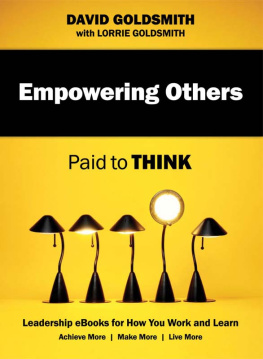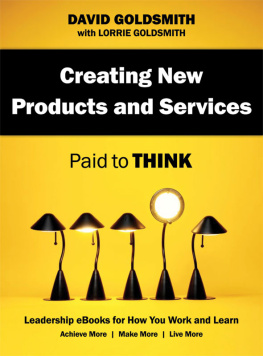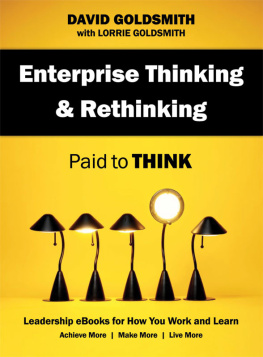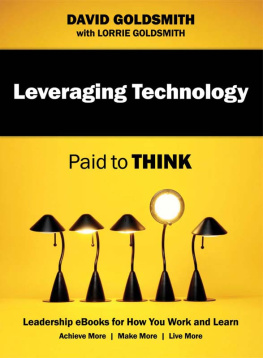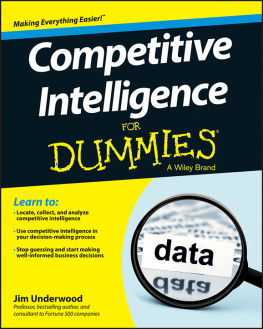
What you should know about your Paid to THINK Single
Here are a couple of tips you should know now about the Paid to THINK Single. The Paid to THINK Single is being offered to decision makers as an educational tool, designed from a long history of people seeking to use portions of content in their quests to do their jobs better. Over the years, countless leaders have received and utilized single chapters from Paid to THINK effectively to solve certain challenges and create opportunities, and now they are available to you, too.
Although each Paid to THINK Single stands on its own as a proven educational resource, be aware that within the content of certain Paid to THINK Single books, you may come across references to other Paid to THINK Singles or to the full edition of Paid to THINK. In these instances, you may want a full edition of Paid to THINK on hand to clarify terminology and concepts not fully described in this particular Paid to THINK Single.
Regardless, leaders and managers have used Paid to THINK Singles as cost-effective means of sharing information with other leaders and/or stakeholders. For instance, if you want to get six managers and 34 group members up to speed on a particular topic rapidly, you dont have to purchase 40 copies of Paid to THINK and ask everyone to read only one chapter within the larger book. Instead, you can economically teach your people by simply securing six copies of Paid to THINK for your leadership team and 34 copies of a Paid to THINK Single and achieve the same outcome!
Paid to THINK Singles offer additional value to people working in NGOs (non-governmental organizations), NPOs (non-profit organizations), and in emerging markets where the need for leadership information is great but where budgets may not be ample enough to cover pricey educational tools and methods. Luckily, Paid to THINK Single gives more people the opportunity to learn and develop..
Paid to THINK Singles make great gifts, and theyre convenient for those who dont want a full book. Whatever your purpose in choosing a Paid to THINK Single, youll find it to be an economical and easy way to learn.
This book is designed to provide accurate and authoritative information about business and leadership. Neither the author nor the publisher is engaged in rendering legal, accounting, or other professional services, by publishing this book. If any such assistance is required, the services of a qualified financial professional should be sought. The author and publisher will not be responsible for any liability, loss, or risk incurred as a result of the use and application of any information contained in this book.
This book contained single-subject material from the book Paid to THINK. Content within this Paid to THINK Single, therefore, does not necessarily cover all the terminology or descriptive material referenced within that pertains to the comprehensive resource Paid to THINK.
Copyright 2012 by David Goldsmith
All rights reserved. No part of this book may be used or reproduced in any manner whatsoever without written permission except in the case of brief quotations embodied in critical articles or reviews.

BenBella Books, Inc.
10300 N. Central Expressway, Suite 400
Dallas, TX 75231
www.benbellabooks.com
Printed in the United States of America
10 9 8 7 6 5 4 3 2 1
Library of Congress Cataloging-in-Publication Data is available for this title.
978-1-937856-51-9
Editing by Lorrie Goldsmith
Copyediting by Shannon Kelly
Proofreading by Cape Cod Compositors, Inc. and Rainbow Graphics
Indexing by Barbara Holloway, WordCo Indexing Services, Inc.
Cover design by Jelena Mirkovic
Text design and composition by Maria E. Mendez, Neuwirth & Associates, Inc.
Printed by Bang Printing
Distributed by Perseus Distribution
www.perseusdistribution.com
To place orders through Perseus Distribution:
Tel: 800-343-4499
Fax: 800-351-5073
E-mail:
CONTENTS
9
WATCHING COMPETITION
IN THE EARLY YEARS OF the nineteenth century, England dominated the textile-manufacturing industry. With the industrys exorbitant entry costs and laws preventing the exportation of technologies (and their designs), it looked like England would maintain its stronghold for generations. These barriers, however, did not intimidate Francis Cabot Lowell, a successful Boston merchant with the drive and financial backing to turn the English textile industry on its head.
When Lowell visited England in 1810, he became captivated by the power loom, a technology that wasnt yet accessible to Americans, and he was determined to recreate the equipment back in America. Lowell memorized the power looms inner workings, and upon his return to Massachusetts, shared the design with a mechanic named Paul Moody. Moody reproduced the technology, conceiving Englands new competitor.
Now armed with the technology, Lowell set his sights on getting it operational. He approached other members of the mercantile community, including his five brothers-in-law, and in 1812 pooled $400,000, the working capital needed to charter the Boston Manufacturing Company. By 1814, Lowells mill not only had the power loom in full operation, but it contained spinning and weaving processes, making it the first company of its kind to fully produce woven fabric from raw cotton in one facility. Yet the innovative side of Lowells business would not be enough to challenge the English textile manufacturers.
English manufacturers probably werent too concerned about a small company like Lowells, because it still lacked efficiencies, economies of scale, and management expertise to compete at the same price pointsbut you should never underestimate a competitor.
In 1816, Lowell lobbied for and won infant industries protection, a tactic used by American and German companies at the cusp of the Industrial Revolution. Essentially, the protection placed the first American tariff on foreign cotton products, limiting overseas rivals from competing in Lowells market for a span of time. During the protection period, Lowells firm (and other start-ups like it) would have sufficient time to grow and develop the operational efficiencies necessary to compete on par with already-established competitors without their interference. Englands established textile manufacturers never saw what hit them until it was too late. In six short years, Lowell had changed an industry.
When you hear a story like this one, you realize how little the dynamics of competition have changed in 200 years. The Francis Lowells of our time continue to shake up industries, organizations, departments, and interpersonal relationship in ways that affect all of us. The question is what side of the scenario do you want to be on?
Every leader is watching and must watch their competitors, but how well are they doing it? Do you have some basic tools at your disposal to ensure that youre looking everywhere, identifying all your competitive threats, gathering the right kinds of information, interpreting your findings accurately, and then using data to make better decisions? When you improve the way you watch your competitionan area called competitive intelligence (CI)you stay ahead of the pack and get what you want. And you should be using CI in all areas of your life.
Next page






